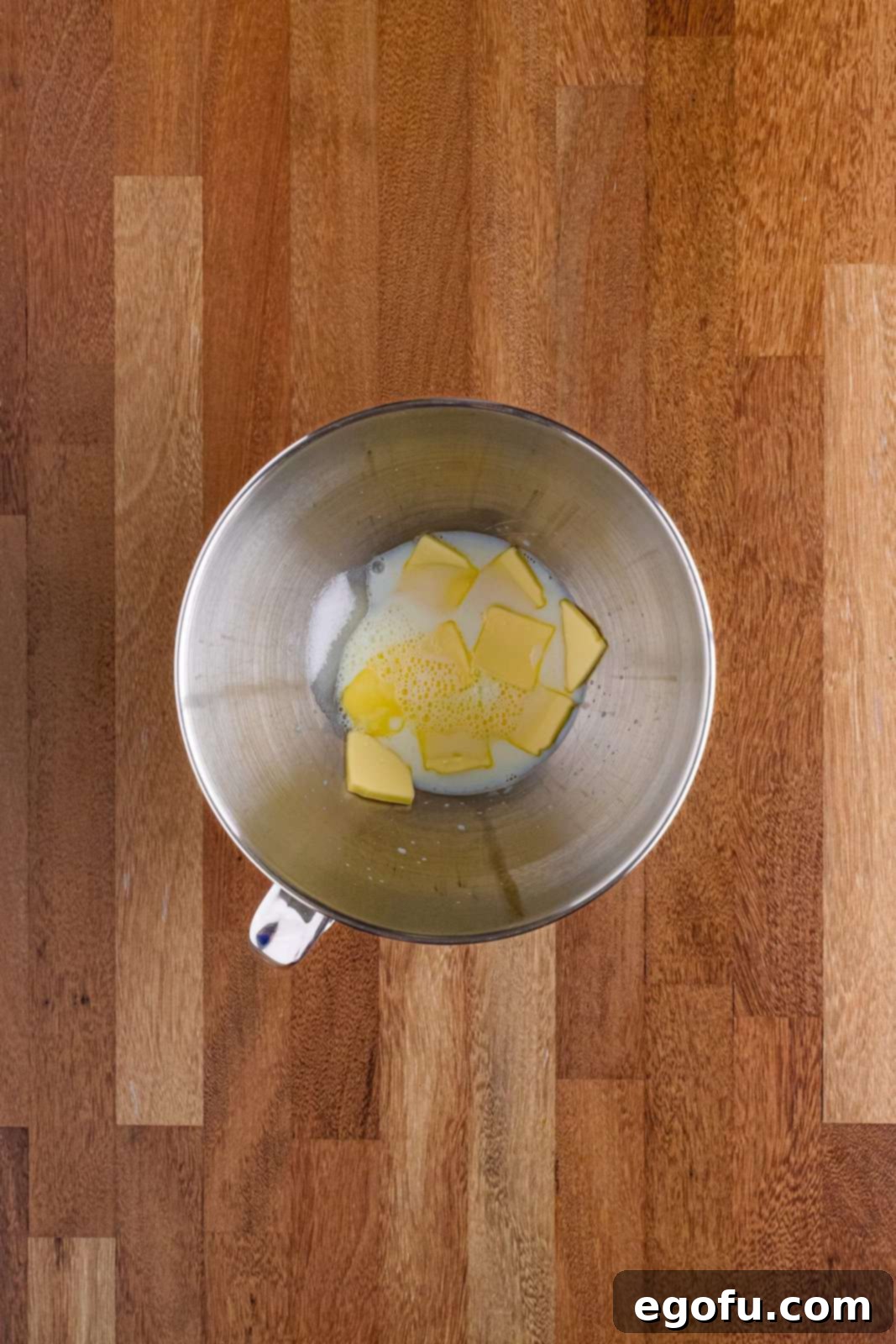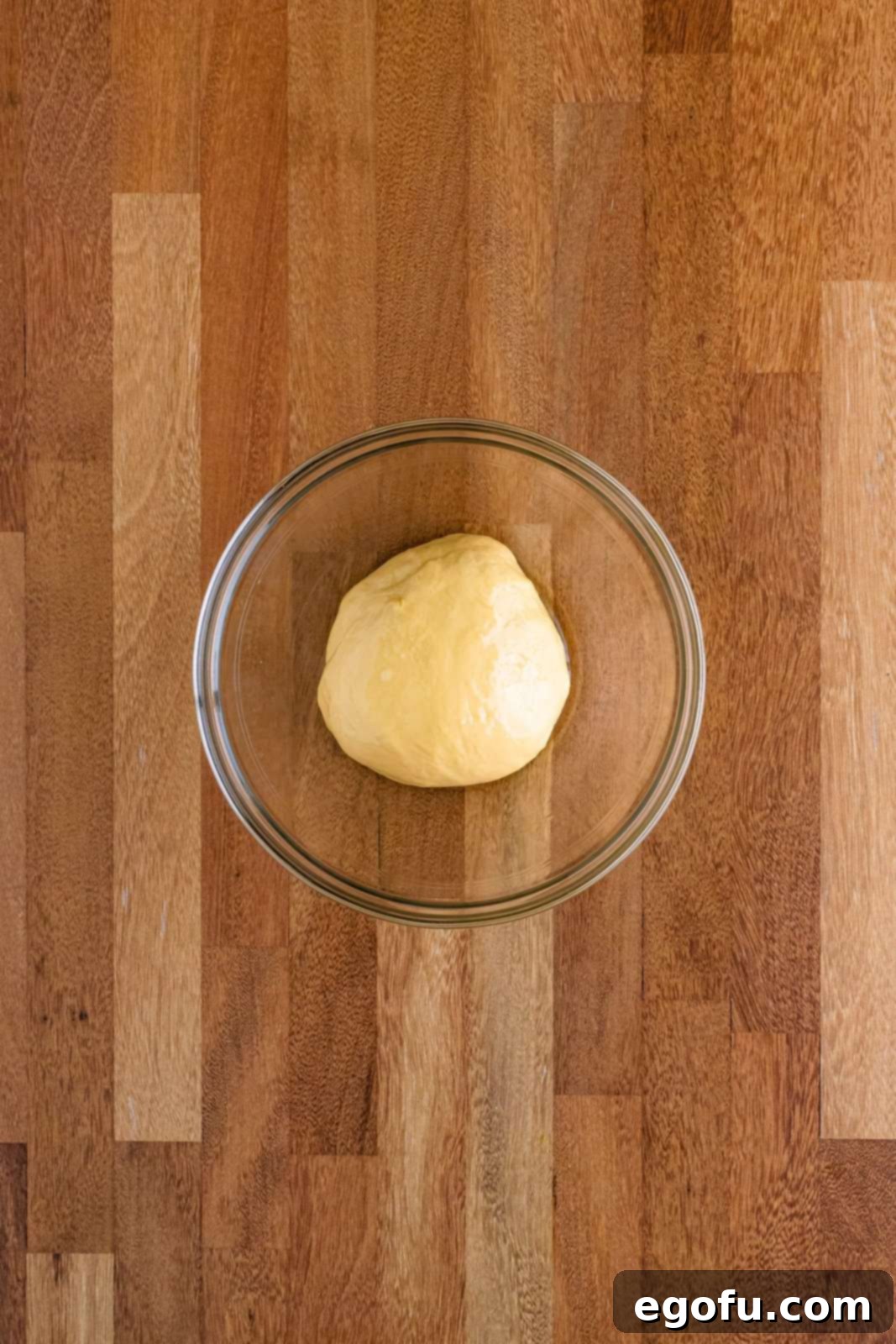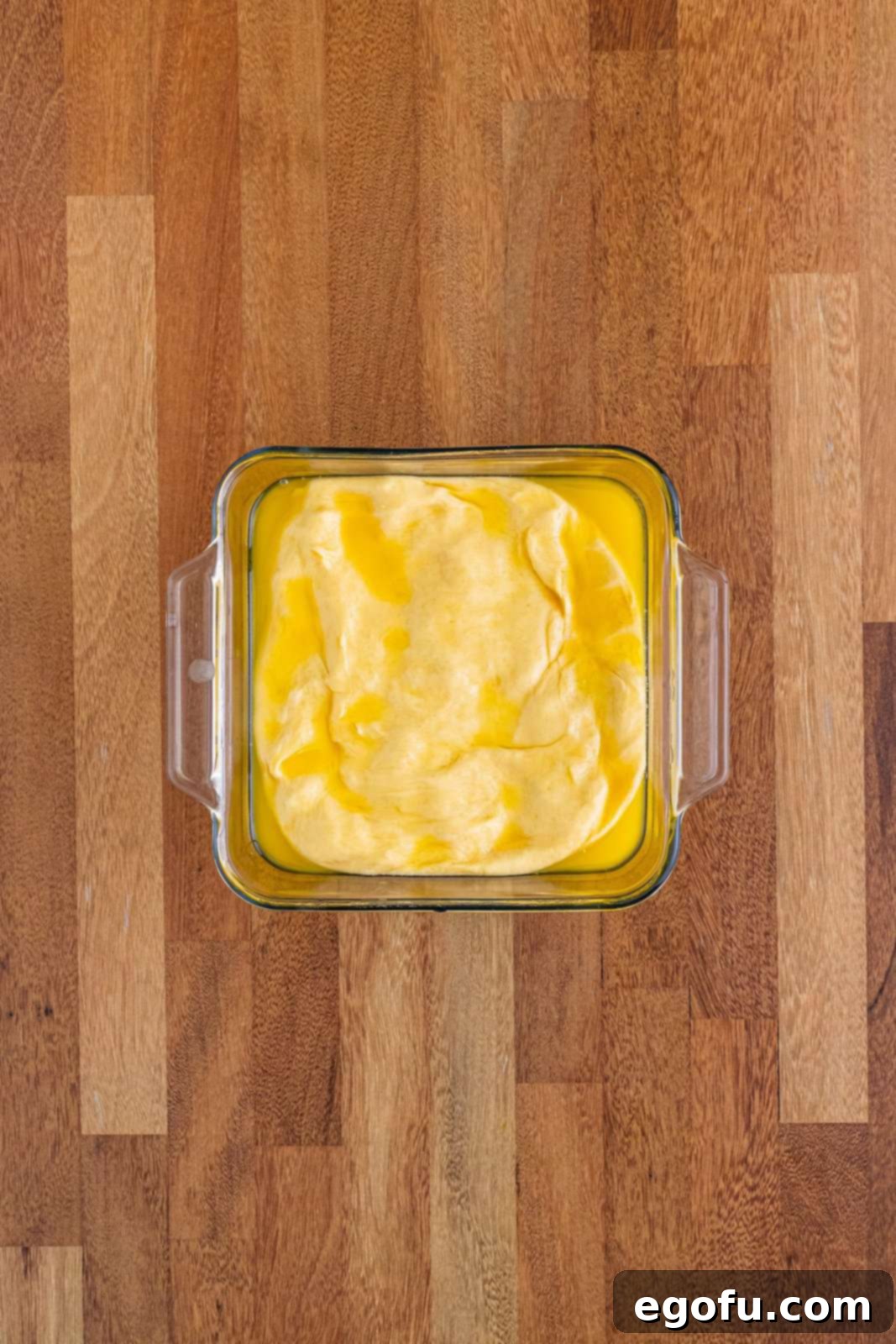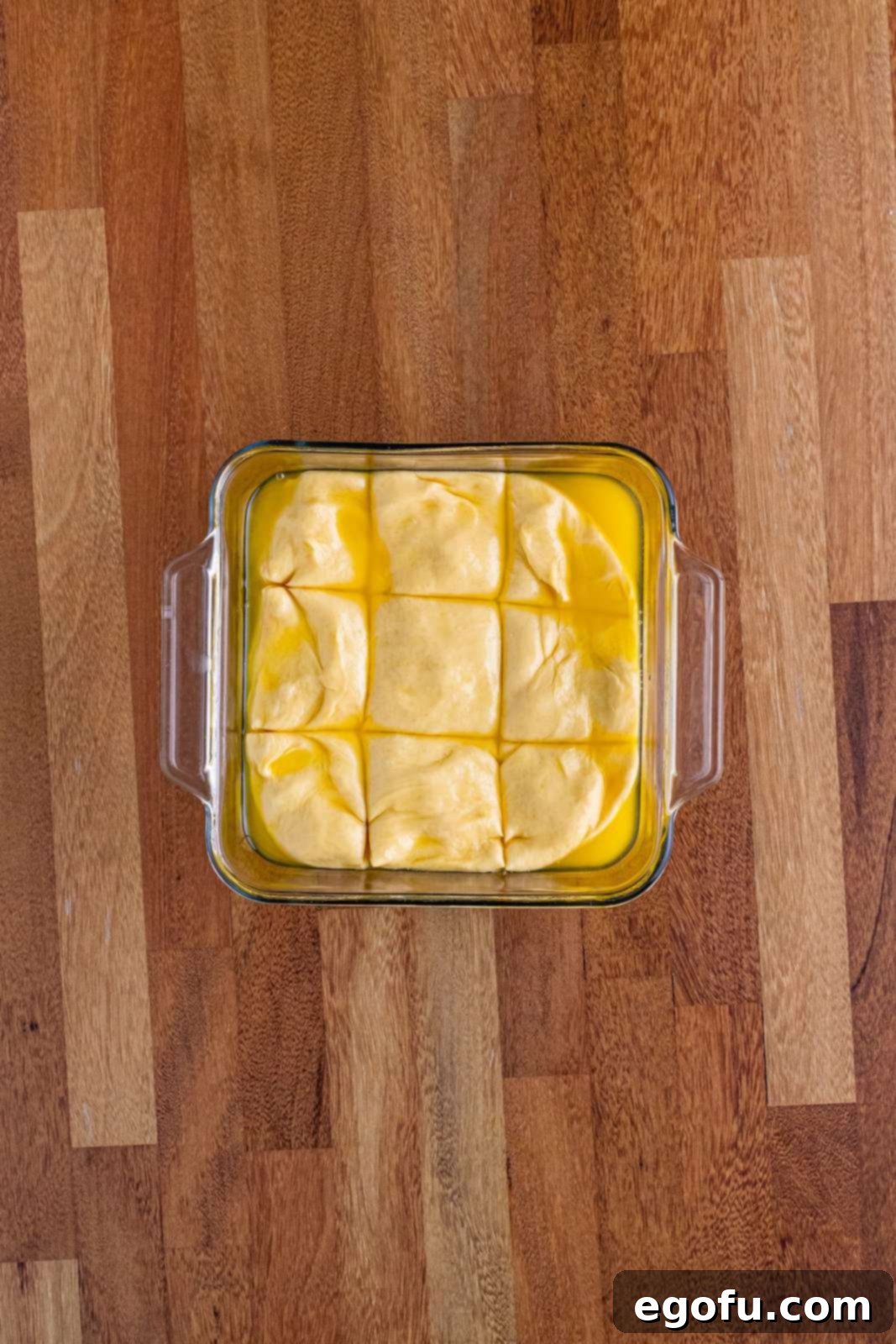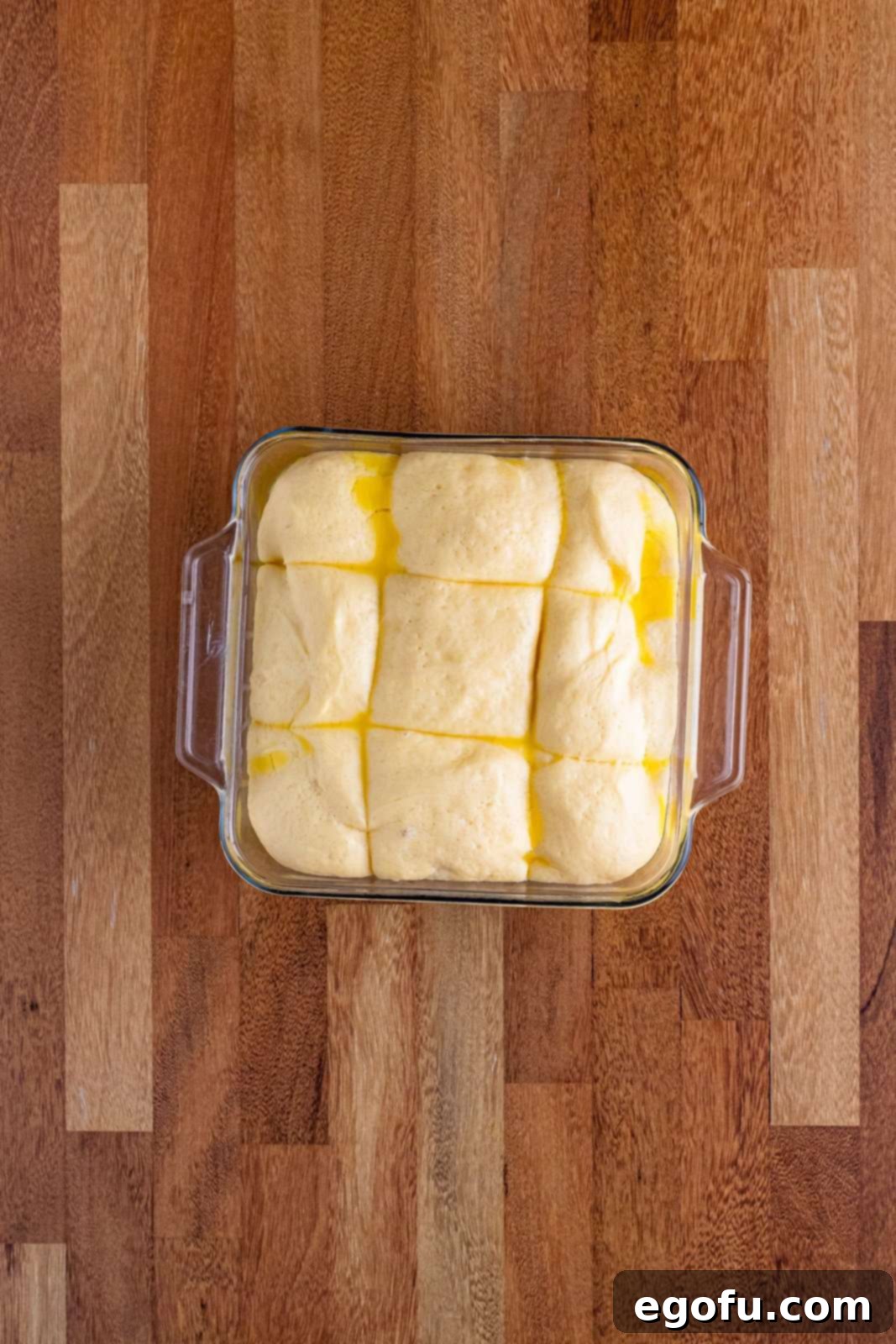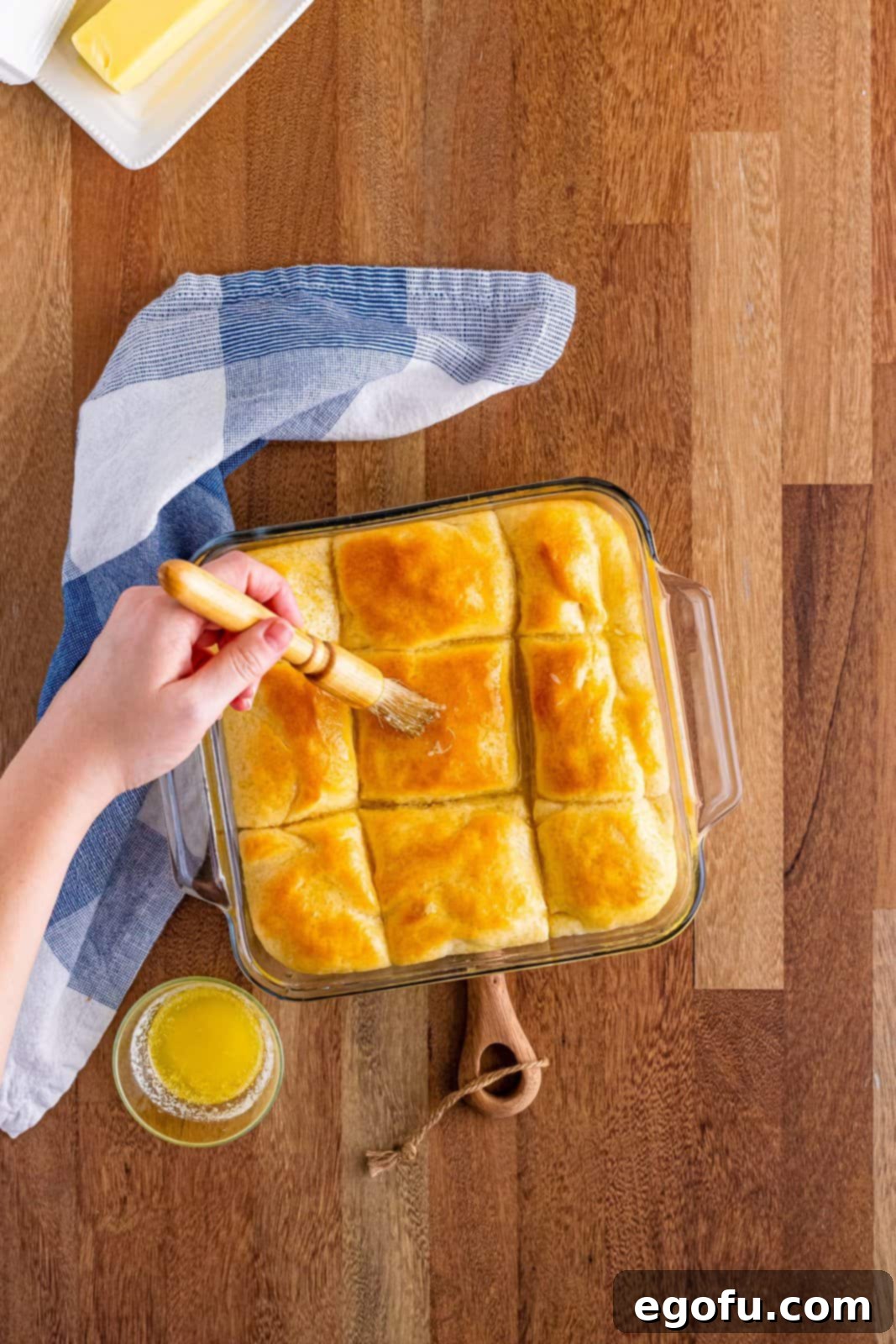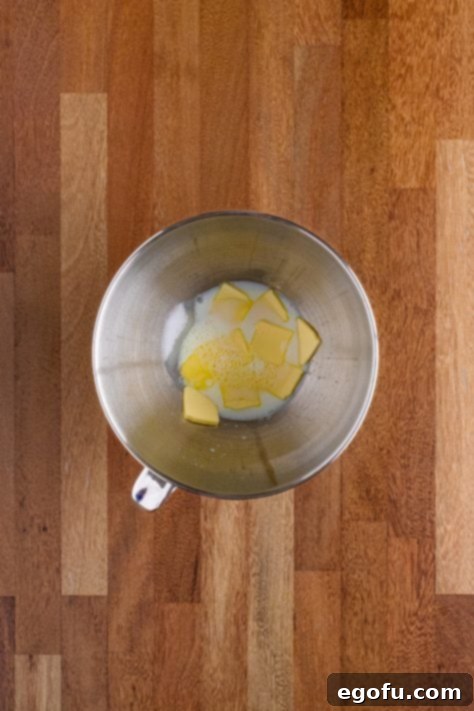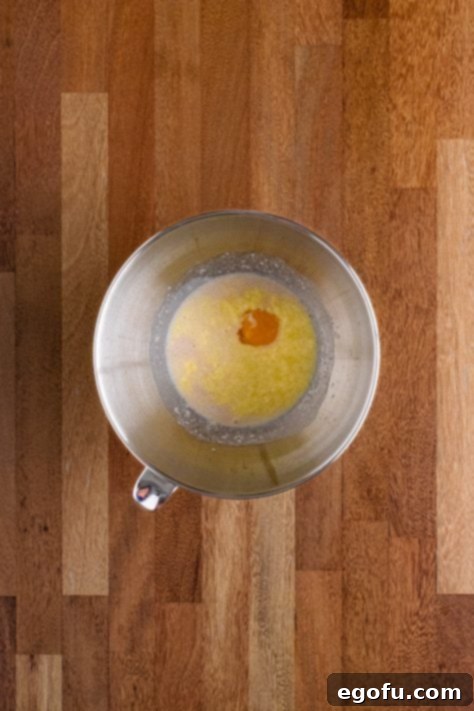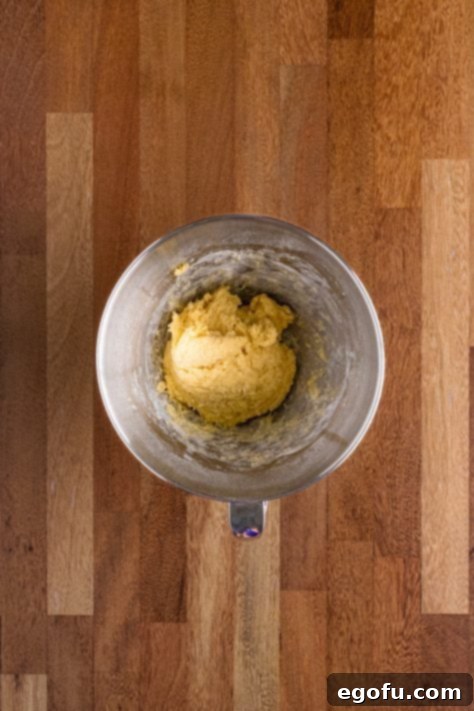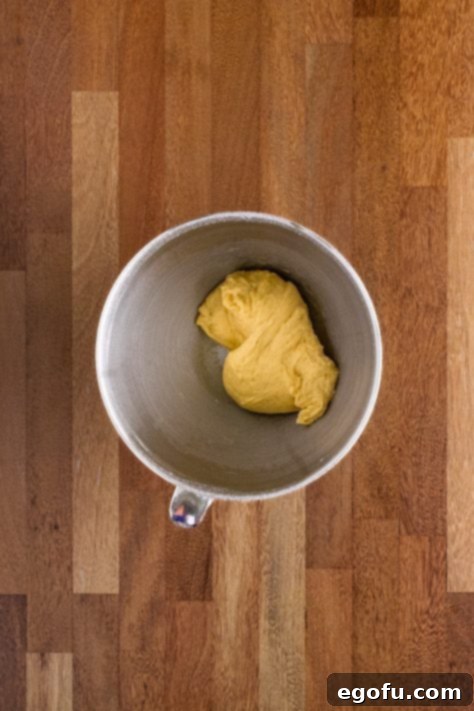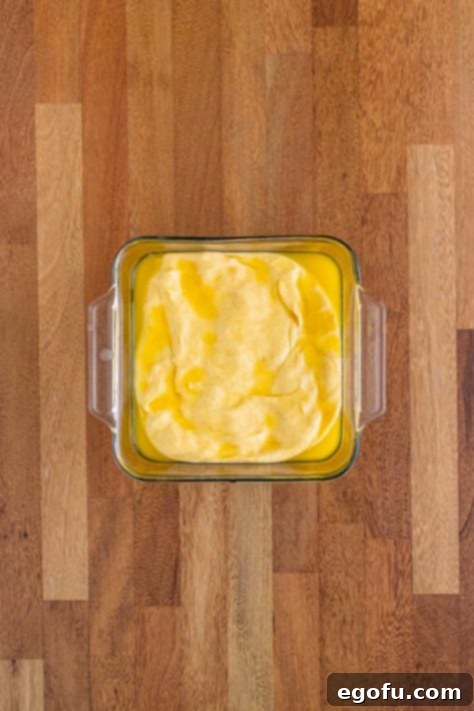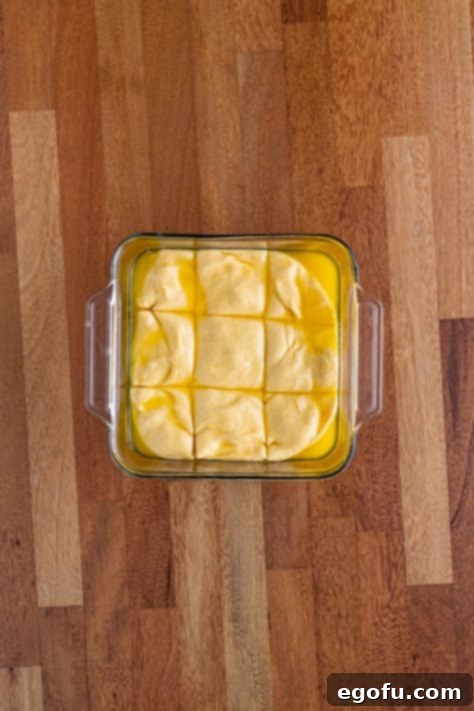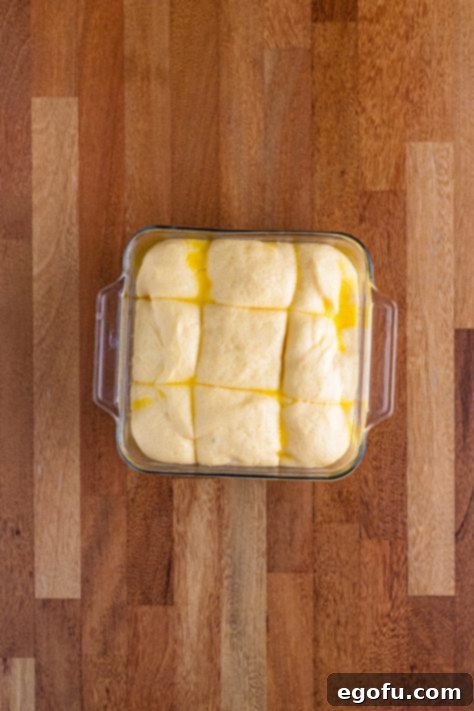Prepare for an absolute sensation at your dinner table with these incredibly easy-to-make Butter Swim Yeast Rolls! They are sensationally light, wonderfully fluffy, and packed with an unbelievable buttery flavor that will have everyone reaching for more. Forget complicated baking processes; this recipe is designed to be the simplest homemade roll you’ve ever prepared, delivering impressive results every single time.
Effortlessly Delicious Butter Swim Yeast Rolls: Your Easiest Homemade Recipe Yet
For years, my Butter Dip Biscuits (also affectionately known as Butter Swim Biscuits) have been a beloved staple, introduced over 13 years ago on this site. Their fame stemmed from their unbeatable ease and irresistible buttery goodness. The natural next step was to create a yeast roll version that captured the same effortless charm and incredible flavor. After extensive testing and meticulous adjustments, I am thrilled to introduce these Butter Swim Yeast Rolls – or Butter Dip Yeast Rolls, as some prefer to call them. They truly live up to the legacy, offering a simple, no-fuss method to achieve bakery-quality, buttery yeast rolls right in your own kitchen.
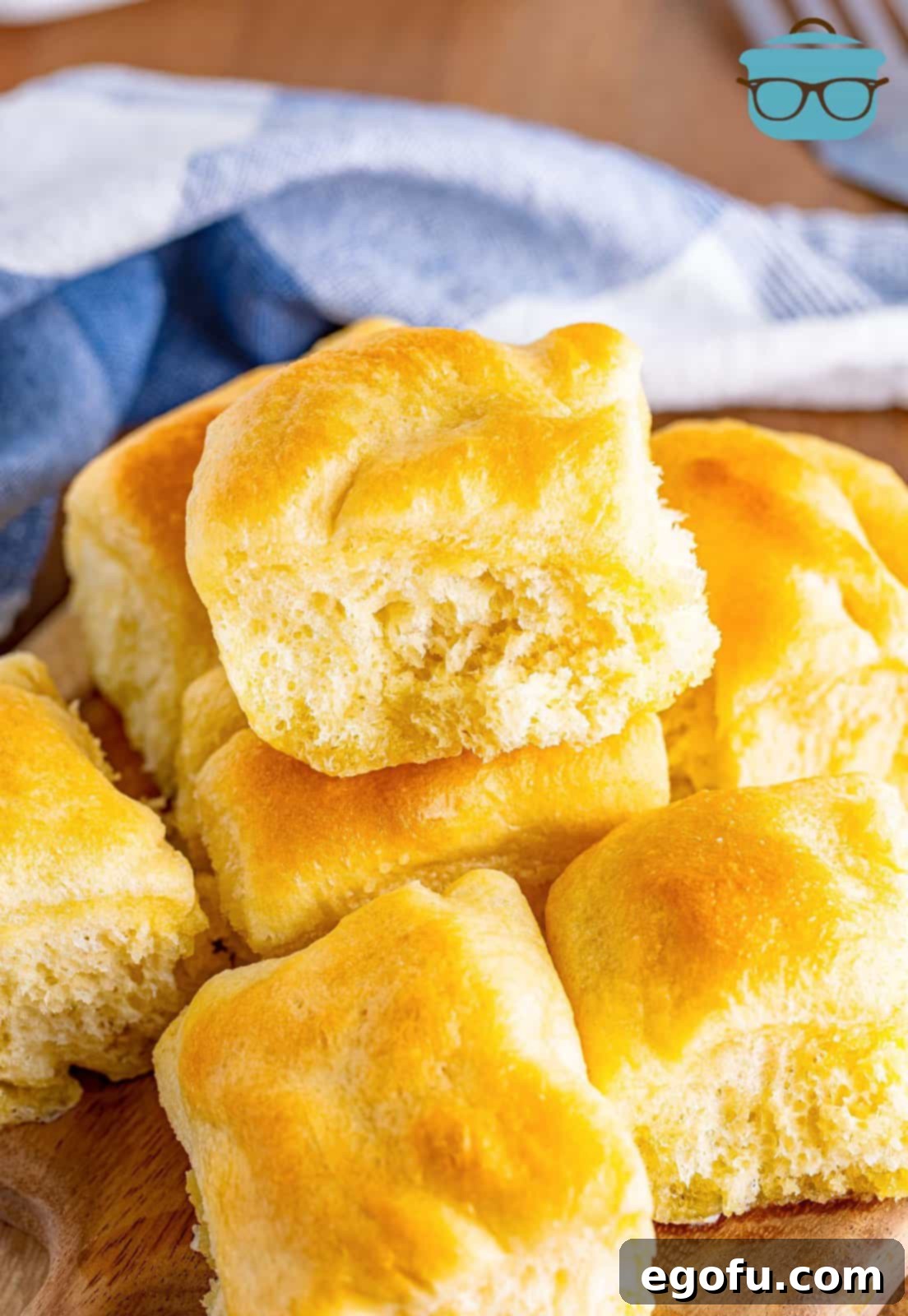
Frequently Asked Questions & Expert Tips for Perfect Rolls
Creating perfect yeast rolls might seem daunting, but with these simple tips and answers to common questions, you’ll feel like a baking pro. We’ve compiled essential advice to ensure your Butter Swim Yeast Rolls turn out perfectly light, fluffy, and utterly delicious.
Achieving the Ideal Warm Environment for Rising Dough
Dough needs a warm, draft-free place to rise effectively. If your kitchen isn’t warm enough, don’t fret! Here are a couple of tricks:
- Oven Method: Preheat your oven to its lowest setting (typically 175-200°F or about 80-95°C) for just a few minutes, then turn it off completely. Place your covered, oven-safe bowl with the dough onto the middle rack of the oven. The residual warmth provides a cozy spot for the yeast to work its magic.
- Microwave Method: For a quick warm spot, place an empty cup of water in your microwave and heat it for 30 seconds. Remove the water, then immediately place your covered bowl of dough inside the microwave. Close the door and let it rise in the enclosed, warm environment. Just remember not to turn the microwave on with the dough inside!
Can I Adjust the Butter Content in My Rolls?
While the “butter swim” concept is central to these rolls’ incredible flavor and texture, you can adjust the amount of butter in the baking dish if you prefer a slightly less rich result. You can use ¼ cup of melted butter instead of the ½ cup called for in the bottom of the baking dish. The unique technique of the butter pooling and permeating the dough will still work beautifully, yielding delicious, tender rolls with a lighter touch of butter.
Choosing the Right Milk for Richness and Texture
For the best flavor and a rich, tender crumb, I recommend using milk with a higher fat content, such as 2% or whole milk. The fat contributes significantly to the rolls’ richness and overall delightful texture. While you can use milk substitutes or lower-fat milk if necessary, please be aware that the final taste and texture might vary slightly. I haven’t personally experimented with milk substitutes, so I can’t guarantee comparable results.
No Stand Mixer? No Problem! Hand-Kneading Made Simple
Don’t have a stand mixer? No worries at all! This recipe is incredibly forgiving and can easily be made by hand. Simply follow all the mixing instructions in a large bowl. Instead of using a stand mixer to knead the dough, turn it out onto a lightly floured surface and knead it by hand until it is smooth and elastic. This typically takes about 3 minutes of consistent kneading. Once the dough reaches the desired consistency, proceed with the rest of the directions for rising and baking.
Storing Your Delicious Leftovers for Maximum Freshness
These Butter Swim Yeast Rolls are undoubtedly at their absolute best when fresh out of the oven. However, if you find yourself with leftovers (a rare occurrence!), you can store them in an airtight container at room temperature for up to two days. To enjoy them beyond that, these rolls freeze exceptionally well. Simply place them in a freezer-safe bag or container and freeze for up to three months. When ready to enjoy, thaw them at room temperature or gently reheat them in the oven for that “just baked” warmth.

Gather Your Simple Ingredients for Irresistible Rolls
One of the beauties of these Butter Swim Yeast Rolls is that they require only a handful of common pantry ingredients. You’ll likely have most of these on hand, making it incredibly easy to whip up a batch whenever the craving strikes for warm, homemade bread.
Ingredients List for Your Butter Swim Yeast Rolls
- Salted butter: Both for the dough and to create that signature “butter swim” in the baking dish.
- Granulated sugar: Provides a touch of sweetness and helps activate the yeast.
- Milk: Essential for tenderizing the dough and activating the yeast.
- Active dry yeast: The star ingredient that makes these rolls wonderfully light and airy.
- Egg yolk: Adds richness, tenderness, and a beautiful golden color to the rolls.
- All-purpose flour: The structural foundation of our dough.
- Vegetable oil: Used to coat the dough for its first rise, preventing sticking.

Step-by-Step Guide: How to Make Butter Swim Yeast Rolls
Follow these simple instructions to create the most divine and easy-to-make yeast rolls. Even if you’re new to yeast baking, this foolproof method will guide you to success.
Prepare the Initial Mixture: Begin by placing 2 tablespoons of thinly sliced salted butter and 2 tablespoons of granulated sugar into the bowl of your stand mixer, fitted with the hook attachment.

The mixing bowl of a stand mixer, containing thinly sliced butter and granulated sugar, ready for the next step. Warm the Milk: Measure out ½ cup + 2 tablespoons of milk. Gently warm the milk in the microwave in 15-second intervals until it reaches a temperature of 105-110°F (40-43°C). Pour half of this warmed milk into the stand mixer bowl. Stir for just a few seconds to begin combining the ingredients. Don’t worry if the butter doesn’t completely melt at this stage; it will incorporate fully later.

A mixing bowl holding butter, sugar, and partially combined with warmed milk, illustrating the initial wet ingredient mixture. Activate the Yeast: Add 1 ½ teaspoons of active dry yeast to the remaining warm milk, stirring gently. Let this mixture sit undisturbed for about 5 minutes, or until it becomes foamy. This indicates that your yeast is active and ready to work. Once foamy, pour the yeast mixture into the mixer along with 1 large egg yolk, and stir until well combined.

The mixing bowl now contains butter, sugar, warmed milk, active yeast, and an egg yolk, all combined to form the liquid base. Form the Dough: Add 1 ¾ cups of all-purpose flour to the wet ingredients in the mixer. Turn the mixer on medium-low speed. As the dough comes together, use a rubber spatula to scrape down the sides of the bowl as needed, ensuring all ingredients are incorporated. Continue mixing until a shaggy, sticky dough starts to form.

A stand mixer bowl showing the early stages of sticky bread dough forming, clinging to the sides of the bowl. Knead the Dough: Increase the mixer speed to medium-high. Observe the dough: if it doesn’t start to pull away cleanly from the sides of the bowl, add more flour, about a teaspoon at a time, until the sides are mostly clean. Knead the dough for a full 3 minutes. It’s perfectly fine if the dough still sticks slightly to the very bottom of the bowl; this ensures a tender roll.

Well-kneaded yeast bread roll dough in a stand mixer bowl, showing a smooth and elastic texture. First Rise: Lightly grease a large bowl with 1 teaspoon of vegetable oil. Transfer the dough to this bowl and turn it around to ensure it’s fully coated in the oil. Cover the bowl tightly with plastic wrap and place it in a warm location. Allow the dough to rise until it has doubled in size, which typically takes about 1 hour.

Glass bowl containing dough that has successfully risen and doubled in size, covered with plastic wrap. Punch Down: Once the dough has doubled, gently punch it down to release the accumulated air bubbles. This step helps create a finer, more even texture in your finished rolls.

A mixing bowl with yeast roll dough after it has been punched down, releasing air and preparing for the next shaping step. Prepare for the “Butter Swim”: Pour ½ cup of melted salted butter evenly into the bottom of an 8×8-inch baking dish. Carefully transfer the punched-down dough into the prepared baking dish. If there’s any residual oil in the dough’s rising bowl, add that too. Gently spread the dough out to fill the sides and corners of the pan. Don’t worry if it doesn’t quite reach every corner; the butter will pool on top, creating pockets of richness.

A glass baking dish containing spread-out bread dough with a generous layer of melted butter pooled on top. Score the Rolls: Using a sharp knife or a bench scraper, carefully cut the dough in the pan into 9 equal portions (a 3×3 grid). This helps define individual rolls and allows the butter to distribute more evenly during baking.

A glass baking dish with bread dough neatly cut into nine individual rolls, ready for a second rise. Second Rise: Cover the baking dish once more with plastic wrap and return it to a warm place. Allow the dough to undergo its second rise until it has doubled in size again, which will take approximately 1 additional hour.

A glass baking dish filled with bread roll dough that has beautifully doubled in size during its second rise, filling the pan. Bake and Serve: Preheat your oven to 350°F (175°C). Bake the rolls for 18-20 minutes, or until the tops are beautifully golden brown and they sound hollow when gently tapped. Immediately upon removing from the oven, brush the tops with a little more melted butter, if desired, for an extra layer of lusciousness. Serve these warm, irresistible rolls right away and enjoy!

A baking dish showcasing fresh, hot butter dip yeast rolls, with a pastry brush gently applying additional melted butter to their golden tops.
There’s nothing quite like the aroma of freshly baked bread filling your home, and these Butter Swim Yeast Rolls deliver that comforting experience with unparalleled ease. Each roll is a cloud of buttery perfection, ready to complement any meal or stand proudly on its own.

A little more butter never hurt anyone, especially when it comes to these delightful rolls!
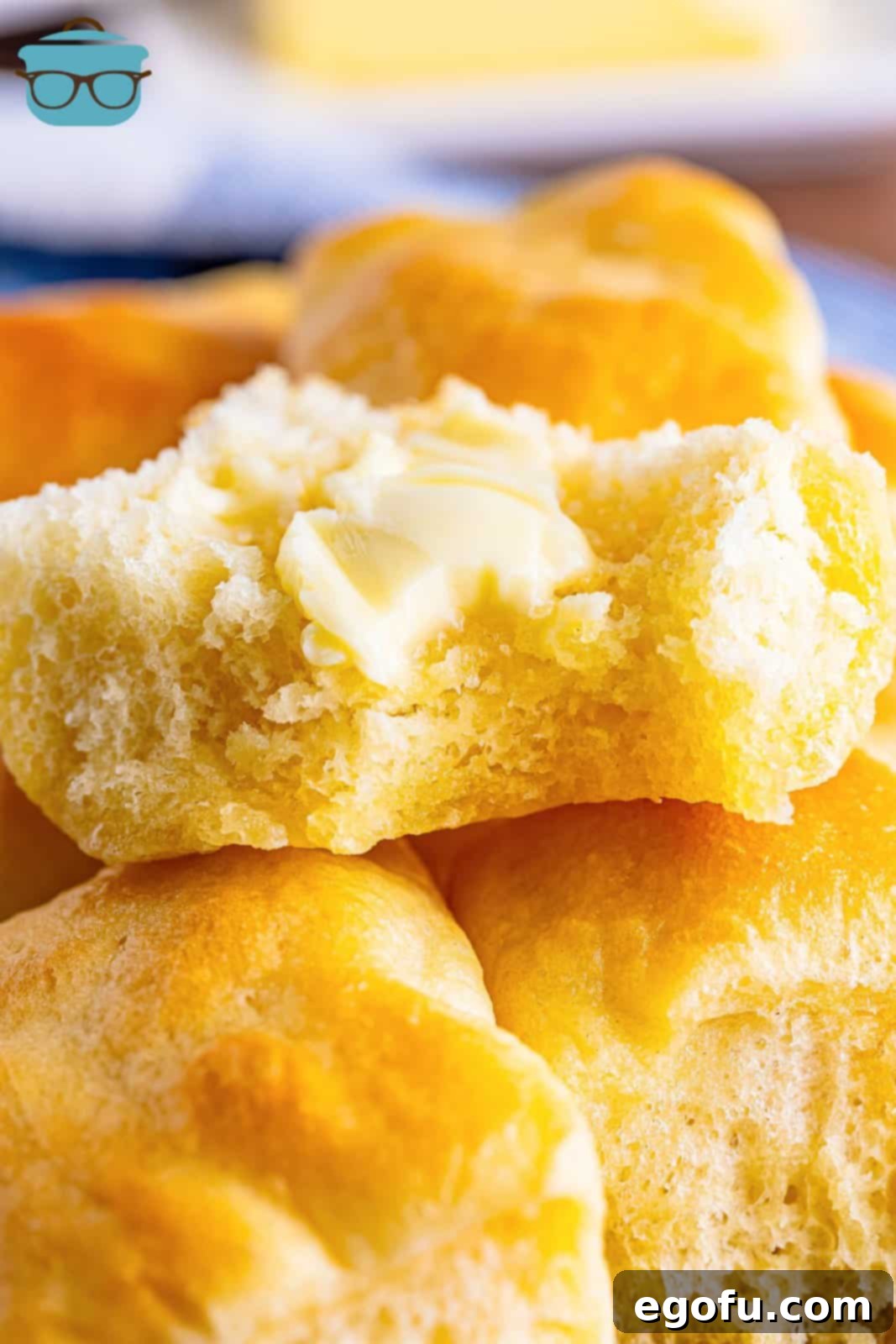
Craving More Easy & Delicious Butter Swim Recipes?
If you’ve fallen in love with the “butter swim” concept, you’re in luck! There’s a whole world of variations to explore, from sweet to savory. Try your hand at these other fantastic recipes:
- Original Butter Swim Biscuits
- Strawberries and Cream Butter Swim Biscuits
- Peach Butter Swim Biscuits
- Cinnamon Sugar Butter Swim Biscuits
- Bacon Cheddar Ranch Butter Swim Biscuits
- Blueberry Butter Swim Biscuits
- Cheddar Garlic Butter Swim Biscuits
- Beer Bread Butter Swim Biscuits
- Garlic Butter Swim Biscuits
- Apple Pie Butter Swim Biscuits
- Jalapeno Popper Butter Swim Biscuits
- Cinnamon Roll Butter Swim Biscuits
- Breakfast Butter Swim Biscuits
- 7Up Butter Swim Biscuits
- Ham & Cheese Butter Swim Biscuits
- Sausage Gravy Butter Swim Biscuits
- Air Fryer Butter Swim Biscuits
Butter Swim Yeast Rolls Recipe Card

Butter Swim Yeast Rolls
Everyone will go crazy for these Butter Swim Yeast Rolls! They’re light, fluffy, and soooo buttery! The easiest homemade rolls you’ve ever made!
10 Reviews
Print Recipe |
Pin Recipe
Prep Time: 10 minutes |
Cook Time: 20 minutes |
Rise Time: 2 hours |
Total Time: 2 hours 30 minutes
Servings: 9 servings
Author: Brandie Skibinski
Ingredients
For the dough:
- 2 Tablespoons salted butter, thinly sliced
- 2 Tablespoons granulated sugar
- ½ cup + 2 Tablespoons milk, divided use
- 1 ½ teaspoons active dry yeast
- 1 large egg yolk
- 1 ¾ cups all-purpose flour (you may need up to 2 cups)
- 1 teaspoon vegetable oil
For assembly:
- ½ cup salted butter, melted
Instructions
Place 2 Tablespoons salted butter, thinly sliced and 2 Tablespoons granulated sugar into the body of a stand mixer with the hook attachment.

Warm 1/2 cup + 2 Tablespoons milk, in the microwave in 15-second intervals until it reaches 105-110°F. Pour half of the milk into the stand mixer. Stir for a few seconds to combine, the butter will not fully melt, but that’s okay.

Add 1 1/2 teaspoons active dry yeast to the remaining warm milk, stir and let it sit for 5 minutes or until foamy. Pour into the mixer along with 1 large egg yolk, and stir to combine.

Add 1 3/4 cups all-purpose flour to the mixer. Turn the mixer on medium-low, and scrape the sides as needed until a dough starts to form.

Turn the mixer onto medium-high speed, if the dough doesn’t start to clean the sides of the bowl, start adding more flour, about a teaspoon at a time, until the sides of the bowl are cleaned. Knead the dough for 3 minutes, if the dough is still sticking slightly to the very bottom of the bowl, that’s okay.

In a large bowl, add 1 teaspoon vegetable oil. Take the dough and turn it around in the bowl, so it gets coated in the oil. Cover with plastic wrap and place in a warm place until doubled, about 1 hour.
Punch down the dough to release the air bubbles.

Pour 1/2 cup salted butter, melted into an 8×8-inch baking dish. Lay the dough into the baking dish (along with any oil left in with the dough) and gently spread it out to the sides and corners, if it won’t stretch all the way, that’s okay. Some of the butter will pool on top.

Take a sharp knife and cut the dough into 9ths while in the pan.

Cover and place the dough in a warm place again and allow it to double. About 1 more hour.

Preheat the oven to 350°F. Bake for 18-20 minutes until golden brown on top and when tapped on top they sound hollow. Immediately brush with more melted butter if desired and serve.

Notes
- No warm place? No problem! If you don’t have a warm place to put the dough to rise, you can run the microwave with nothing in it for 30 seconds, then open it, close the door and allow the dough to rise in the microwave.
- You can use ¼ cup of butter in place of the ½ cup in the bottom of the baking dish if you wanted the rolls a little on the lighter side, this technique will still work.
- Freeze any leftovers for up to 3 months. Keep leftovers in an airtight container at room temp for up to 2 days, they are best eaten right away if possible.
Course: Breads
Cuisine: American
Nutrition
Calories: 338kcal | Carbohydrates: 44g | Protein: 7g | Fat: 15g | Sodium: 109mg | Fiber: 2g | Sugar: 3g
Nutritional Disclaimer
“The Country Cook” is not a dietician or nutritionist, and any nutritional information shared is an estimate. If calorie count and other nutritional values are important to you, we recommend running the ingredients through whichever online nutritional calculator you prefer. Calories and other nutritional values can vary quite a bit depending on which brands were used.
Did you make this recipe?
Share it on Instagram @thecountrycook and mention us #thecountrycook!


